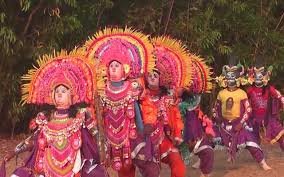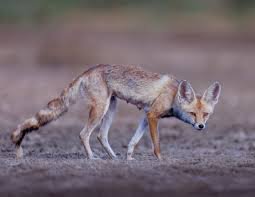Which District of West Bengal is Known as the City of Tribal Tradition?
Introduction: The City of Tribal Tradition
West Bengal is home to a rich cultural heritage, with diverse communities and traditions that reflect its historical evolution. One district that stands out for its vibrant tribal culture is Purulia, often referred to as the “City of Tribal Tradition.” Located in the western part of the state, Purulia is known for its significant tribal population, cultural diversity, and historical importance. The district is not only famous for its folk art forms but also for its scenic beauty and rich natural resources.
Tribes and Cultural Significance of Purulia
Purulia is primarily inhabited by tribal communities, with the most prominent among them being the Santhal, Bhumij, and Oraon tribes. These communities have preserved their age-old traditions, rituals, and lifestyles, making Purulia a vital center for studying tribal culture in India. The district is known for its distinctive folk dances, like the Chhau dance, which has been recognized by UNESCO as an Intangible Cultural Heritage. The local people engage in various traditional crafts, including making bamboo items, pottery, and handwoven textiles, contributing to the district’s cultural landscape.
Importance of Purulia in West Bengal’s Economy
In addition to its cultural heritage, Purulia plays a key role in the economy of West Bengal. Agriculture is the primary occupation, with crops like rice, maize, and vegetables being grown in abundance. The district is also rich in natural resources, including forests and minerals, which contribute to the industrial sector. Purulia’s economic development is closely tied to the preservation of its tribal culture, as many of the local crafts and tourism activities are based on the tribal way of life.

Why This News is Important: Understanding Purulia’s Role in West Bengal’s Cultural Landscape
Cultural Preservation and Diversity
The recognition of Purulia as the “City of Tribal Tradition” highlights the importance of preserving indigenous cultures in India. Tribal communities in Purulia, such as the Santhal and Bhumij tribes, maintain a lifestyle deeply rooted in traditional knowledge, rituals, and customs. In today’s rapidly changing world, this recognition encourages efforts to safeguard these unique traditions, which contribute to the cultural diversity of the state.
Boosting Tourism and Economic Growth
The cultural richness of Purulia also makes it an important destination for cultural tourism. The district’s folk dances, traditional crafts, and historical sites attract visitors from all over the country and abroad. Promoting Purulia as a cultural hub can help increase tourism, providing an economic boost to local communities while also ensuring that traditional arts and crafts continue to thrive.
Enhancing Tribal Welfare and Representation
By acknowledging Purulia’s tribal heritage, the state government and policymakers can focus on improving the living standards and welfare of tribal populations. Economic development programs, healthcare initiatives, and education opportunities aimed at tribal communities can help uplift the socio-economic conditions in Purulia and other tribal areas in West Bengal.
Historical Context: The Evolution of Purulia’s Tribal Tradition
Tribal Settlements in Purulia
The history of Purulia’s tribal culture dates back centuries. The district has been home to various tribal communities, many of whom are believed to have migrated from different regions of India and beyond. Over time, these communities adapted to the region’s geographical features, such as its forests, hills, and rivers, creating a unique lifestyle based on agriculture, hunting, and gathering.
The Chhau Dance and Cultural Significance
Purulia is particularly famous for the Chhau dance, a traditional martial art-based dance form that has been practiced for centuries. This dance, performed during festivals like the Chhau festival, reflects themes of valor, mythology, and regional stories. The dance form, with its acrobatic movements and colorful costumes, has been passed down through generations and is a vital aspect of Purulia’s cultural identity.
The Role of Tribes in West Bengal’s History
The tribals of Purulia have played a significant role in the social and economic history of West Bengal. Many of these communities fought for their rights and independence during British colonial rule and later during India’s struggle for independence. Over time, they have continued to maintain their traditions while adapting to the broader socio-political changes in India.
Key Takeaways from “Purulia: The City of Tribal Tradition”
| Serial Number | Key Takeaway |
|---|---|
| 1 | Purulia is known as the “City of Tribal Tradition” due to its rich tribal culture and heritage. |
| 2 | The district is home to various tribal communities, including the Santhal, Bhumij, and Oraon tribes. |
| 3 | Chhau dance, a martial art-based folk dance from Purulia, is recognized by UNESCO as an Intangible Cultural Heritage. |
| 4 | Purulia’s economy is based on agriculture, natural resources, and cultural tourism, which helps promote its tribal heritage. |
| 5 | Efforts to preserve and promote Purulia’s tribal traditions contribute to the development of the district’s cultural tourism and economic growth. |
Important FAQs for Students from this News
What is Purulia known for?
Purulia is known as the “City of Tribal Tradition” due to its rich tribal culture, traditional practices, and unique art forms such as Chhau dance.
Which tribes primarily inhabit Purulia?
The primary tribes in Purulia are the Santhal, Bhumij, and Oraon tribes, who maintain their distinct cultural heritage.
What is Chhau dance, and why is it important?
Chhau dance is a traditional martial art-based dance form from Purulia, recognized by UNESCO for its cultural significance. It is performed during festivals and symbolizes valor, mythology, and regional stories.
How does Purulia contribute to West Bengal’s economy?
Purulia contributes to the economy through agriculture (growing rice, maize, etc.), natural resources, and cultural tourism, with local crafts and folk art playing an important role.
Why is preserving tribal traditions important for Purulia?
Preserving tribal traditions is essential for maintaining cultural diversity, promoting tourism, and ensuring the socio-economic development of the tribal communities in Purulia.
Some Important Current Affairs Links


















